If you’re anything like me, you can’t wait to get your hands in the dirt and plant your tomato plants. But before you do, you should know a couple of things about adding nutrients to your tomato planting hole.
I’m here to set the record straight on some common misconceptions about what actually helps when prepping your planting hole at the start of the season. So without further ado, here are nine things to put in your tomato planting hole—and nine things you shouldn’t.
What to put in your tomato planting hole

This is a classic question for newbies and old-timers, so let’s get into the specifics. You can use these soil amendments in the ground or a container, so no matter where you’re growing, this guide will work for you.
Here’s what I recommend adding to your tomato planting hole once it’s dug to keep your tomato plants fed and happy all summer long.
1. Compost
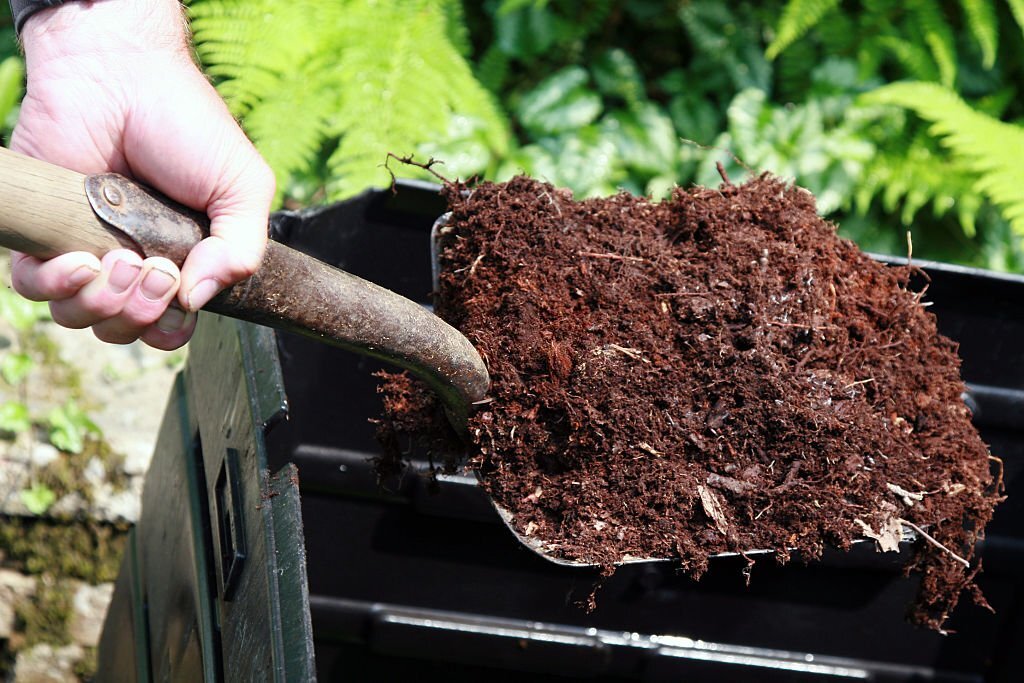
Compost is a mix of decaying leaves, grass, and other organic matter. It is an excellent addition to your tomato planting hole because it helps improve the structure of the soil. The compost will help the roots of your tomato plants to grow more easily through the soil around them.
Compost also helps to improve drainage and aeration in the soil. In addition, compost provides essential nutrients for your tomato plants. It is a rich source of nitrogen, phosphorus, and potassium, all of which are essential for healthy plant growth.
On top of all that goodness, compost helps to suppress weeds and diseases. By adding compost to your tomato planting hole, you can be sure that your tomato plants will have a strong start and a healthy growing season.
2. Organic, slow-release fertiliser
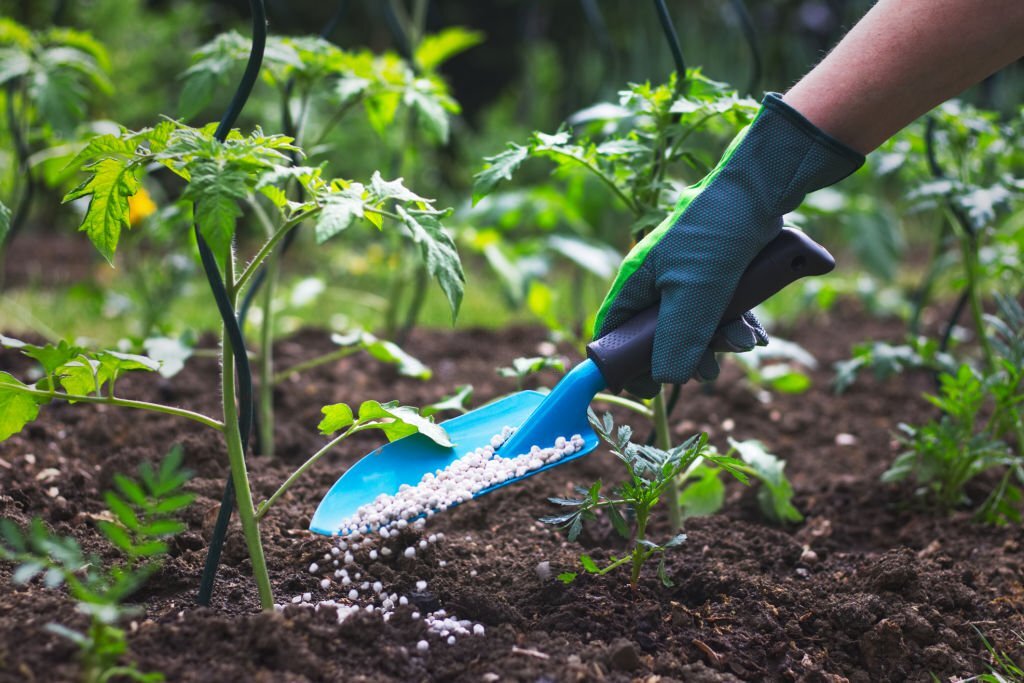
Fertiliser is another essential addition to your tomato planting hole. Fertiliser provides the nutrients your plants need to grow strong and produce bountiful fruit.
I recommend using an organic, slow-release fertiliser. This kind of fertiliser will slowly release nutrients into the soil over time, so your plants can take up the nutrients they need. This is a much more efficient way of fertilising your plants than using a quick-release fertiliser, which can leach out of the soil before your plants can use it (Slow-release fertilisers are more effective when applied as needed).
When choosing a fertiliser for your tomato plants, look for one high in nitrogen, phosphorus, and potassium. These are the three essential nutrients that tomato plants need for healthy growth. You can find organic, slow-release fertilisers at your local garden centre or online. they usually come in granular or pelleted forms.
3. Worm castings
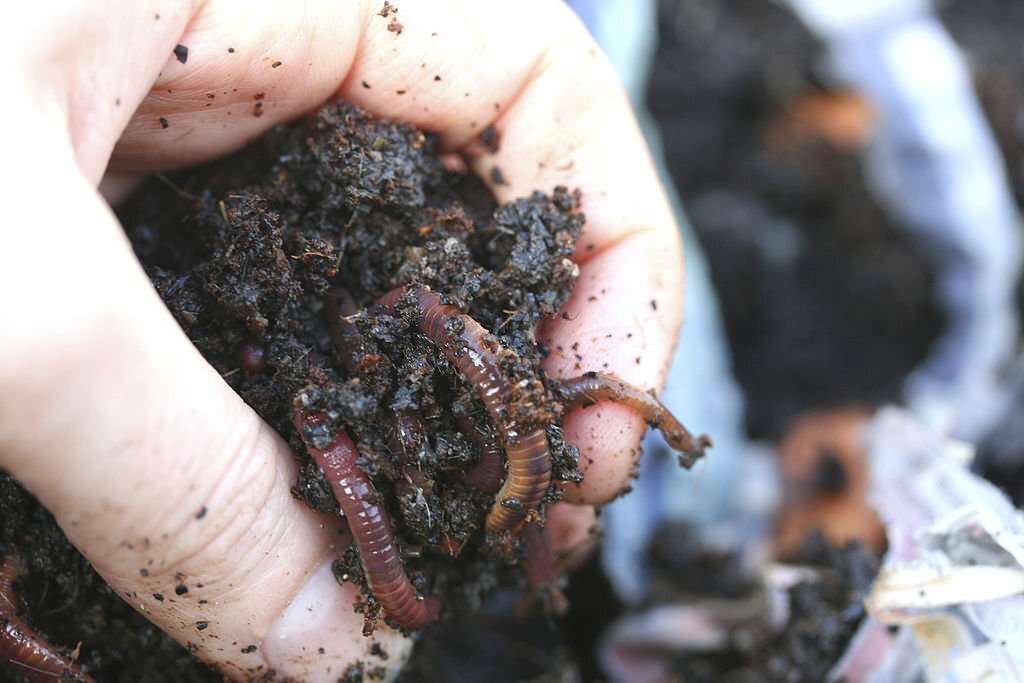
When it comes to tomato planting, many gardeners swear by worm castings. Worm castings are essentially the poop of worms, full of nutrients that tomatoes love. Adding worm castings to your tomato planting hole helps improve the soil quality and provide essential nutrients for your tomato plants.
The castings also help aerate the soil and improve drainage, which is essential for healthy tomato growth. Additionally, worm castings help to discourage pests and diseases, making them a valuable addition to any tomato planting hole.
Always mix the worm castings with the soil at the bottom of the hole before planting anything. A thick layer of castings can form a barrier between plant roots and actual soil, making it more complicated for them to take root and grow downwards. Add about one cup of worm castings before mixing everything together in the planting hole – this should do the trick!
There are a few ways to get your hands on worm castings for your garden. You can buy them online or make your own by composting food scraps with worms. If you choose to compost your food scraps, be sure to use a vermicomposter to compost with red worms.
Another way to get worm castings for your garden is to collect them from a local worm farm. Many farmers will sell worm castings by the pound, making them a great addition to any tomato planting hole.
4. Blood meal
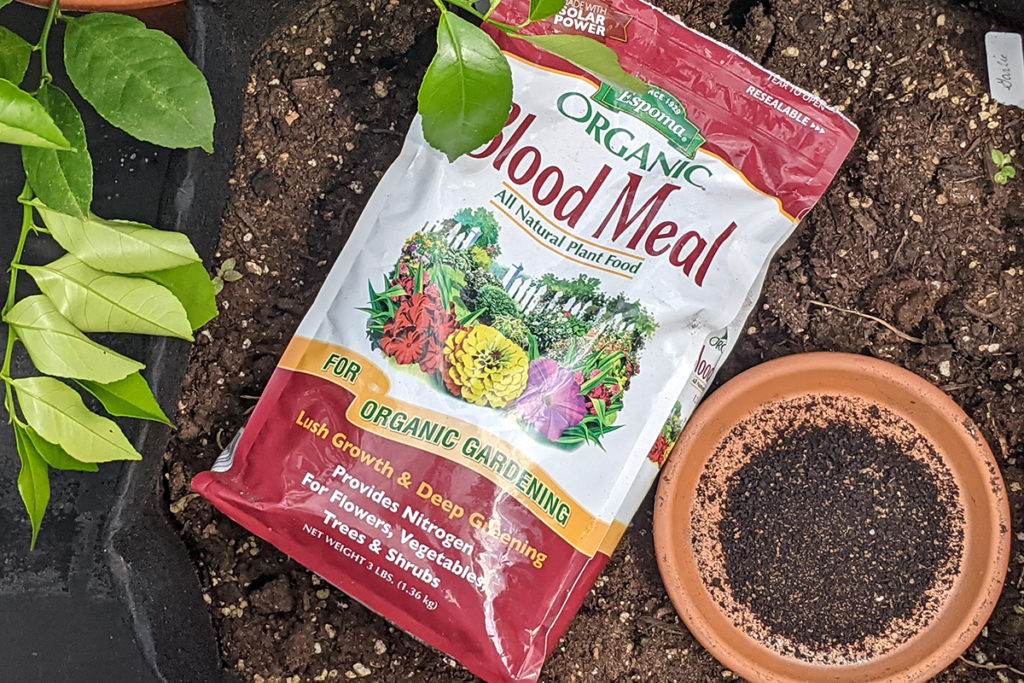
Any tomato lover knows that the key to success is in the soil. Blood meal is a great way to improve the quality of your tomato planting hole. Rich in nitrogen, blood meal helps to promote growth and increase yields. In addition, it helps to improve the structure of the soil, making it more aerated and able to retain moisture.
As a result, tomato plants fertilised with blood meal tend to be healthier and more productive. So if you’re looking for a way to give your tomato plants a boost, blood meal is a great option. You can buy a bag of blood meal for gardening at most home improvement stores or online.
5. Rock phosphate

Rock phosphate is a type of mineral deposit that is often used as a fertiliser. It consists of phosphate rocks that have been crushed into a powder. The powder can then be mixed with water and applied to tomato planting holes. Some gardeners like adding rock phosphate to their tomato plants’ regular fertiliser regimen.
Rock phosphate is rich in phosphorus, an essential nutrient for tomato plants. Phosphorus helps to promote strong root growth, increased flowering, and improved fruit production. It also helps plants to better withstand stress from drought, disease, and pests. Rock phosphate can also help increase your tomato plants’ overall nutrition.
Adding it to their regular fertiliser regimen can help ensure that your tomato plants get all the nutrients they need to grow healthy and produce bountiful fruits. Rock phosphate can often be found at garden stores or home improvement stores. It can also be ordered online from various gardening websites.
6. Kelp meal

Kelp meal is made by grinding up dried kelp into a powder. This powder can then be used to fertilise gardens and crops. Kelp meal is rich in nitrogen, potassium, and phosphorus. These nutrients help to promote plant growth and improve soil health.
The seaweed contains compounds that repel insects and fungi, making it an effective natural pesticide. When used as a fertiliser, kelp meal helps plants to grow stronger and healthier. As a result, kelp meal is an excellent choice for gardeners who want to improve the quality of their plants. Kelp meal is rich in nutrients and helps to promote healthy growth.
In addition, kelp meal helps improve water retention, so it’s a great product to use in dry areas. Tomato plants grown in kelp-enriched soil are less likely to be attacked by insects or fungal diseases. Kelp meal can be found at many garden stores and retailers since it’s a fairly common garden amendment.
7. Bone meal
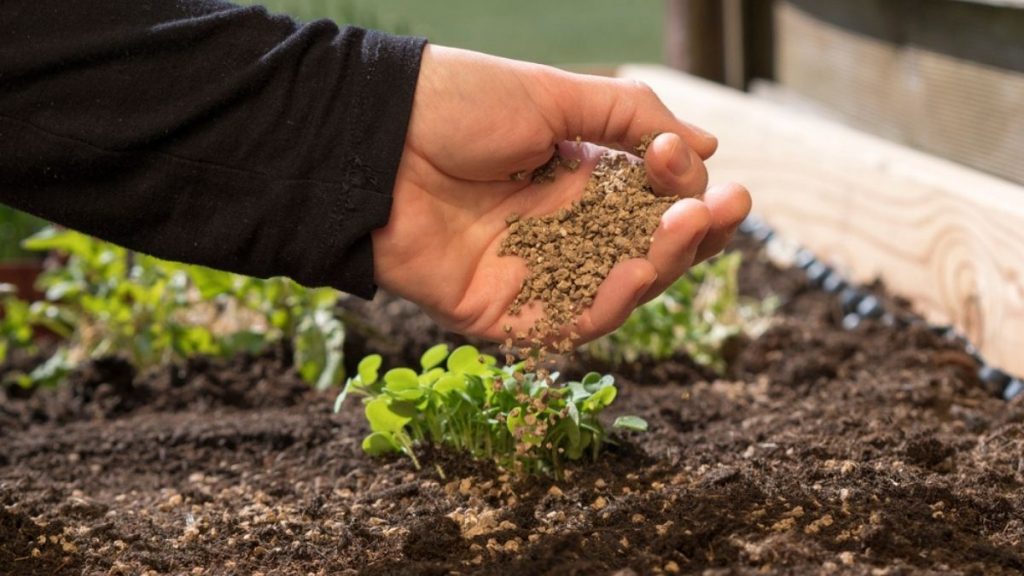
Bone meal is a natural source of phosphorus and nitrogen, two essential nutrients for tomato plants. Phosphorus helps with root development and flower production, while nitrogen aids in photosynthesis and leaf growth. In addition, bone meal helps to encourage bacterial growth in the soil, which can improve tomato plants’ uptake of nutrients.
You can find bone meal at most garden centres or online retailers. It’s typically sold in powder or pellet form and is easy to use. Add it to your tomato planting hole along with some of the other amendments, and you’ll be on your way to healthy tomatoes.
8. Coffee grounds
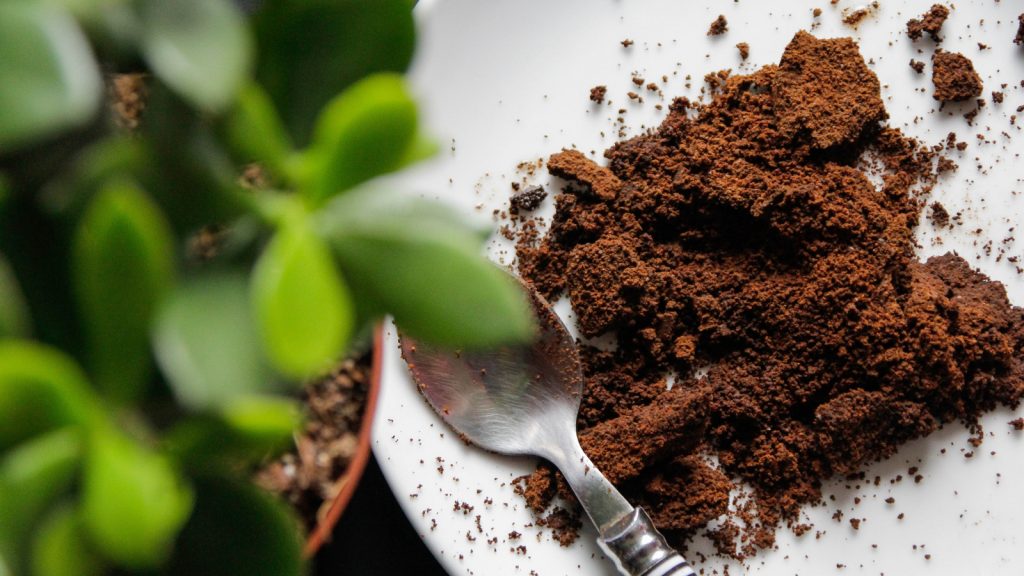
Coffee grounds are a great addition to your tomato planting hole. They help improve drainage and aeration while adding nutrients to the soil. Coffee grounds also help to keep the roots of your tomato plants cool, which is important in hot weather. In addition, coffee grounds can help to repel tomato pests such as slugs and caterpillars.
So if you’re looking for a way to boost your tomato plants, consider adding coffee grounds to their planting hole. You may just be surprised at the results.
If you don’t drink coffee or you’re planting a large number of tomatoes and need a way to gather coffee grounds for your tomato planting holes, try calling local coffee shops and asking them to save your used grounds for you. Local coffee shops and even some large chain stores will often set aside used coffee grounds for gardeners to use in their compost bins and in their gardens.
9. Epsom salt (Maybe)

Epsom salt is commonly recommended for tomato planting holes, but you might not want to. Epsom salt is high in magnesium sulphate, which can harm your tomato plants if used in excess. While a little bit of Epsom salt can help with blossom end rot, too much can cause problems such as stunted growth and yellow leaves.
An important caveat here is that Epsom salt won’t positively affect your plants unless you have a magnesium deficiency in your soil. If your soil is already high in magnesium, adding Epsom salt will be a waste of money. So before you add it to your tomato planting hole, test your soil to see if it’s deficient in magnesium. Only then will you know for sure whether or not Epsom salt will benefit your tomato plants. If you decide to use Epsom salt, use it sparingly and don’t use more than the package recommends.
There are several ways to get a soil test. You can go to your local Extension office and have them do a test for you, or you can send in a sample to a testing lab. Many online services will test your soil for a fee. There are also quite a few soil test kits that you can pick up online – just be sure that the kit you’re buying tests for the right minerals and other indicators to get the information you need.
No matter which method you choose, it’s crucial to get a soil test at least once a year to adjust your fertiliser and composting programs accordingly. With regular soil testing, you’ll see an improvement in the health and productivity of your garden in no time.
What not to put in your tomato planting hole and why
There are a million and a half gardening myths, especially online! I want to discuss a few things you might not want to put in your tomato planting holes. At the very least, all the products I’m listing below are items you should think twice about and thoroughly research before adding to your tomato planting hole.
1. Baking soda

Contrary to popular belief, baking soda does not help to prevent blossom end rot or make your tomatoes sweeter.
For a long time, people believed that since baking soda is alkaline, it will reduce the acidity of tomatoes and make them sweeter. This isn’t true because the sheer amount of baking soda you’d need to add to the soil to affect soil pH would be way beyond what the tomato plant could handle – it would be toxic, in fact.
Baking soda is also high in sodium, which can work its way into the soil and accumulate over time. This can lead to many problems such as stunted growth, yellow leaves, and poor fruit production.
Baking soda is one of those supposed miracle garden amendments, but it doesn’t do all the things that people swear it does, and you can skip adding it to your tomato planting hole.
There are a few practical applications for it in the garden, however. Some of them are helpful for growing tomatoes. Here’s some of the ways you can use baking soda in a foliar spray for tomatoes:
- Kills pests (Aphids, slugs, and snails);
- Prevents powdery mildew;
- Prevents and fights blight.
2. Eggshells
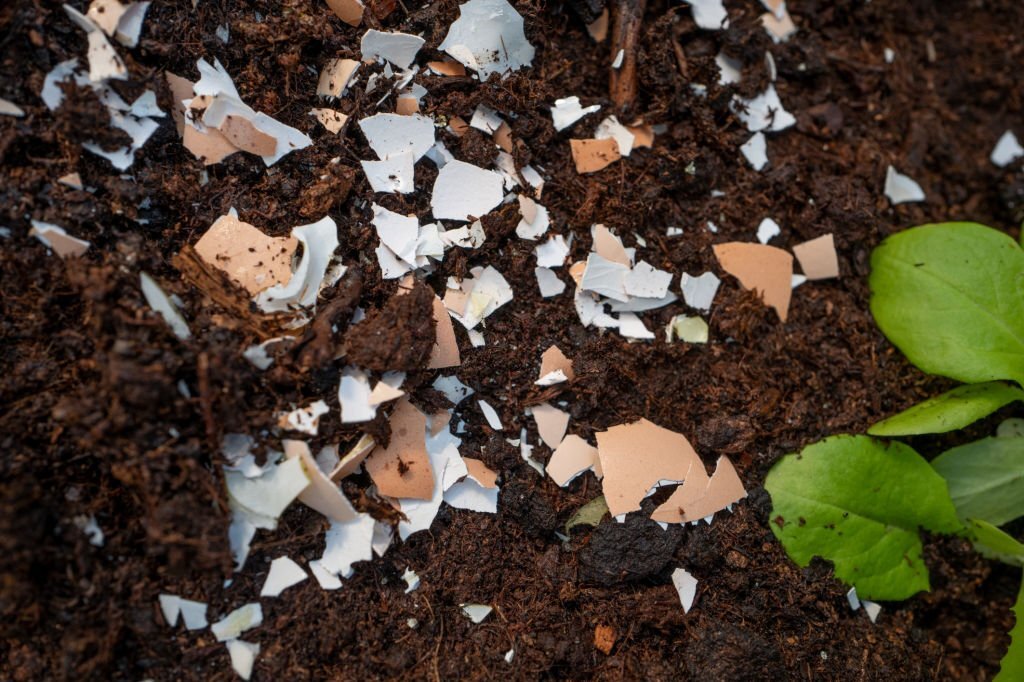
You’ve probably heard that adding eggshells to your tomato planting hole is a good strategy, but this isn’t necessarily true. Eggshells take a crazily long time to decompose in the soil, which means they’re not giving your tomato plants any benefit this season or next.
They take 5-10 years to fully break down and return nutrients to the soil, so adding them to your tomato planting holes is pretty useless. If you’re insistent on using eggshells in your gardening, your best bet is probably to blend them up or crush them into tiny pieces, almost to a powder, before adding them to your garden. That way, the calcium and other nutrients are more likely to seep into the soil in less than a decade.
3. Eggs

Raw eggs have recently had a resurgence in popularity when it comes to preparing your tomato planting holes. Still, there is little evidence that they benefit tomato plants significantly. There have been a few experiments where tomatoes were planted with raw eggs and compared to plants that were planted without eggs, and the results have been fairly mixed.
For the most part, the gardening community has landed on the consensus that adding raw eggs to your tomato planting holes is a great way to stink up your garden and attract animals who will try to dig them up.
4. Unfinished manure compost

Unfinished manure compost is manure that has not yet undergone the decomposition process. While unfinished manure compost can benefit plants, it can also be harmful if not used correctly.
One of the biggest dangers of using unfinished manure compost is that it can contain high nitrogen levels. If this nitrogen is added to a tomato planting hole, it can encourage the tomato plant to produce too much foliage, which can lead to problems with fruit production.
Unfinished compost can cause chlorosis, too, which causes plants to lose nutrients and yellow. It strains the plants’ nutrient intake, stresses them, and makes their leaves yellow.
Unfinished compost starves the plants of nitrogen by taking it from the soil, which makes this essential nutrient unavailable. The unfinished compost will deplete crucial nutrients from the plant’s root system and surrounding soil. At the same time, it decomposes but can also contain phytotoxic compounds and harmful bacteria and pathogens that are harmful to your tomato plants.
If these pathogens come into contact with tomato plants, they can cause disease and damage the plants. For these reasons, it is essential to only use finished manure compost when adding it to tomato planting holes.
5. Manure from non-herbivores

Manure from non-herbivores can harm your tomato plants. The high levels of nitrogen in the manure can burn the roots of your tomato plants, causing them to die. In addition, the manure can contain harmful bacteria and viruses that can infect your tomato plants.
Adding manure from non-herbivores to your tomato planting hole can attract rodents and other creatures that will dig up your plants. So save yourself some trouble and leave those types of manure out of your tomato garden.
6. Lime (Maybe)

Lime is a calcium-rich soil amendment that can be added to tomato planting holes to improve drainage and discourage pests. However, lime can also make the soil too alkaline for tomato plants, resulting in stunted growth and yellow leaves.
If you’re planning on adding lime to your tomato planting hole, it’s best to test the pH of the soil first. That way, you can be sure that the tomato plants will be able to thrive in their new home.
7. Banana peels
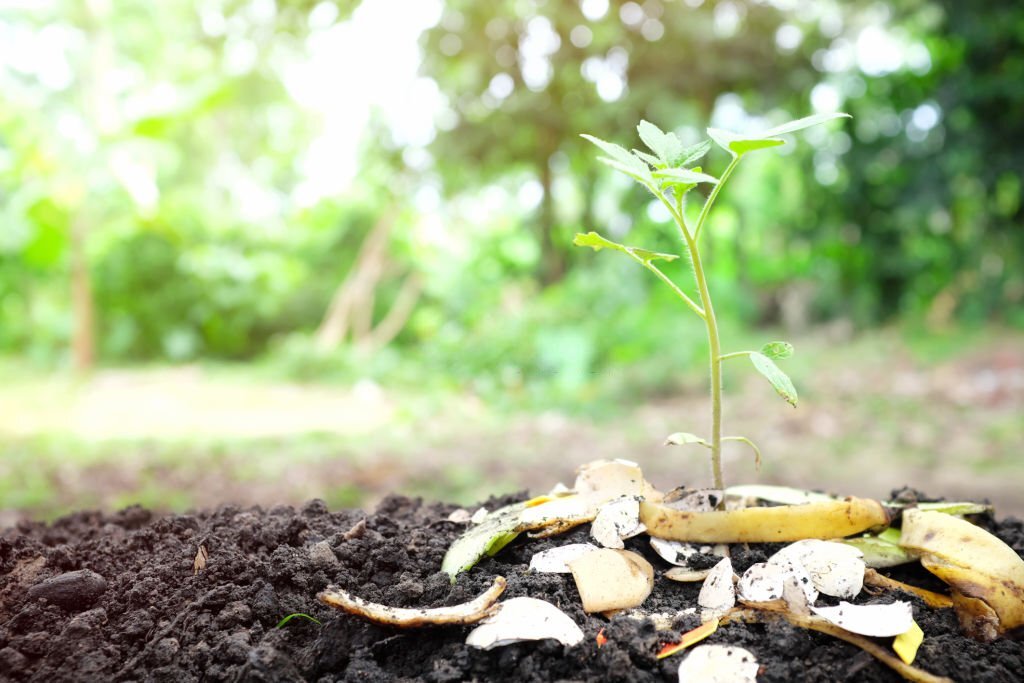
Although banana peels contain minerals that act as fertiliser, they may take a while to decompose and form air pockets which can harm plants. They can also block tomato plant roots from growing as deep as they need to, hindering the plant’s potential.
Banana peels are rich in potassium and phosphorus, which are helpful in growing tomato plants. They take a long time to decompose when added to the soil in large pieces.
While some gardeners recommend using chopped-up banana peels or tea made from the peel, it likely won’t provide enough nutrients to have a meaningful effect on your tomato plants. Try adding your banana peels to your compost bin instead! Chop them up to help them break down faster. This is a much more effective way to use your banana peels in the garden.
8. Fish heads
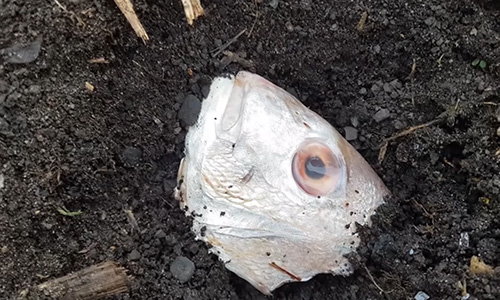
According to some, fish heads may act as a slow-release fertiliser when placed in the planting hole before tomato plants. This is a long-held “best practice,” but there isn’t much objective evidence that adding fish heads to your tomato planting holes does anything beneficial.
Raw fish heads and other seafood scraps can potentially fertilise tomato plants. Seafood is rich in minerals and nutrients that help facilitate plant growth, including nitrogen, phosphorus, and calcium.
But is it worth it when so many other options are available? Their pungent smell and likelihood to attract pests make them a less than ideal soil amendment, and I would recommend against adding them to your tomato planting holes. If you choose to, be sure to bury them deep!
9. Aspirin
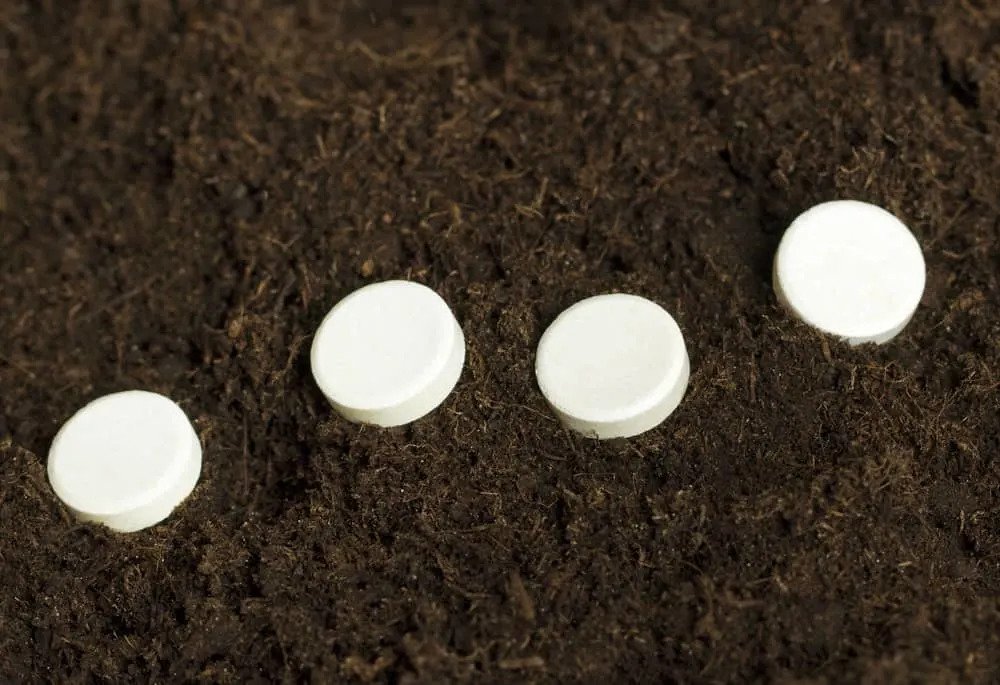
Adding aspirin to your tomato planting hole is often recommended to prevent blossom end rot. Blossom end rot is a common issue in tomatoes caused by a lack of calcium in the fruit.
While aspirin contains calcium, it also contains other chemicals that can harm plants. In addition, applying aspirin to the soil around your plants can make them more susceptible to disease.
For these reasons, avoiding adding aspirin to your tomato planting hole is best. If you’re concerned about blossom end rot, it’s better to add a calcium-rich soil amendment like lime or bone meal and check your soil’s pH.
How to prepare the soil for your tomatoes?
Mixing in some organic matter is the most essential step in preparing the soil for your tomato plants. This can be done by adding the soil amendments of your choice to the planting hole. Doing this will help the soil retain moisture and nutrients, encouraging healthy growth in your tomato plants.
In addition, it’s a good idea to test the soil’s pH levels before planting. This will ensure that the tomato plants can thrive in their new home.
When you’re ready to plant, dig a hole twice as wide and deep as the root ball of the tomato plant. Then, mix in your chosen organic matter and a scoop of organic fertilizer and water the area well. Finally, plant your tomato plant and water it deeply.
Video About Tomato Planting Holes
FAQs About Tomato Planting Holes
What’s the best soil for tomatoes?
The ideal soil for tomatoes is loam and sandy loam soils, but they will grow in virtually any type of soil with the exception of very compacted, clay soil. Make sure your soil is well-drained and moist-retaining, has plenty of organic matter and nutrients, and is aerated. Tomatoes enjoy a slightly acidic environment, with the optimum pH level for tomatoes ranging from 6 to 7.
How to grow tomatoes in poor soil?
Tomatoes will grow in poor soil, but they may not produce as much fruit as they would in ideal conditions. To help your tomato plants thrive, mix in some organic matter to the planting hole and water the area well. You can also add a scoop of organic fertiliser to the hole to give the plants a boost.
What is the best thing to put around tomato plants?
Mulch is the best thing to put around tomato plants. Mulch helps discourage weeds, retains moisture, and keeps the roots of the plants cool. Many different types of mulch can be used, such as straw, grass clippings, leaves, wood chips, or newspaper.
When should I start planting tomatoes?
The best time to start planting tomatoes is in the spring after the last frost has passed. tomato plants can be started indoors about six weeks before the last frost date.
Should you put fertiliser in the hole when planting tomatoes?
Yes, it is best to use fertiliser before planting. This will give the roots of the tomato plants a chance to grow into the fertilizer, making it more effective. If you are planting tomatoes directly into the ground, you can mix a scoop of organic fertiliser into the planting hole along with any other soil amendments.
How deep should I plant my tomatoes?
Tomatoes should be planted relatively deep, with the stem buried about 2/3 of the way up the plant. This will encourage a robust root system, which is essential for healthy tomato plants.
Should I put Aspirin in my tomato planting hole?
No, you should not put Aspirin in your tomato planting hole. Aspirin is an acidic compound that can make the soil too acidic for tomato plants, leading to stunted growth and yellow leaves.
Do you put Epsom salt in hole when planting tomatoes?
Only if your soil has a magnesium deficiency. Using a soil test kit, you can test your soil to see if it needs magnesium. If your soil is lacking in magnesium, you can mix in a tablespoon or two of Epsom salt to the tomato planting hole.
What type of fertiliser is best for tomatoes?
The best fertiliser for tomatoes is an organic one that contains nitrogen, phosphorus, and potassium. You will probably want a slow-release (usually pelleted or granular fertiliser) to help feed the plants steadily throughout the season. In addition, picking up a liquid fertiliser will allow you to provide your plants with additional nutrients as needed since liquid fertilisers start working as soon as you feed your plants.
What are some common problems with tomato plants?
The most common problems with tomato plants are blossom end rot, leaf spot, and fusarium wilt. Blossom end rot is caused by a lack of calcium in the plant or a pH level that doesn’t allow for calcium absorption. Leaf spot is caused by a fungus and can be treated with a fungicide. Fusarium wilt is a disease that affects the plant’s vascular system and can be controlled with resistant varieties or by rotating crops.
How often should you water tomato plants after transplanting them outside?
It is best to water tomato plants every week, giving them about 1 inch of water each time, but it’s important for me to stress that watering varies tremendously depending on your climate and soil type. If it is particularly hot or dry, you may need to water more often. However, be careful not to over-water as this can lead to problems such as blossom end rot and fungal diseases.
Conclusion
Now that you know what to put in your tomato planting hole, it’s time to get started! There are so many myths in the gardening community, but it’s understandable how these myths occur. After all, there are literally thousands of years of human history where we’ve trailed hundreds of different methods for crop cultivation. Tips and “gardening hacks” get passed down through the generations, and sometimes it’s difficult to let go of old methods even if there isn’t a lot of evidence that they work.
It’s always important to do your own research and testing when it comes to gardening. Your local area, your soil, and your gardening microclimate are vastly different than mine, and it’s normal for different soil amendments to have different effects in various parts of the world.
